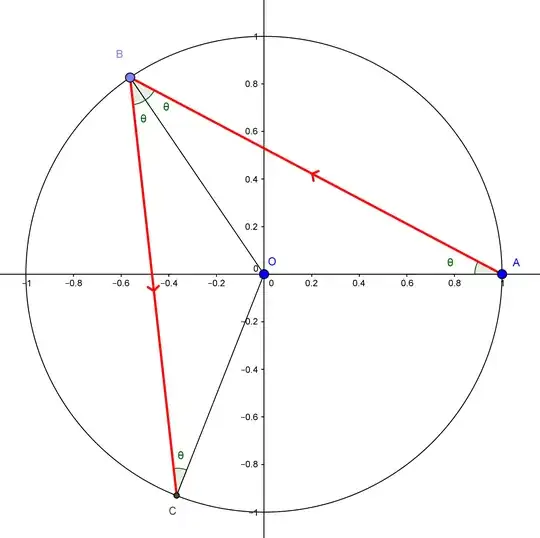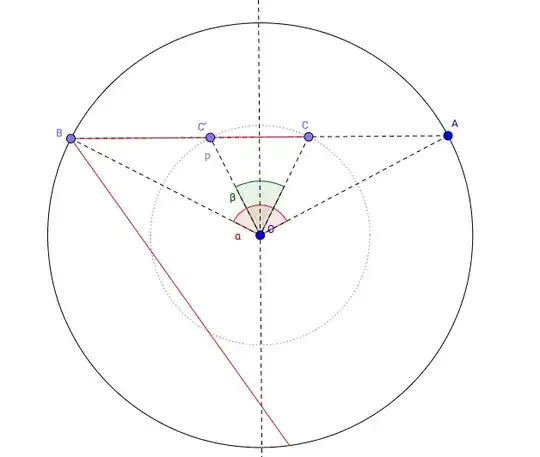Once the ray of light hits the wall for the first time, it will bounce off at a certain angle. Since all points on a circle are essentially the same, the question is: if a ray departs from a point $A$ on a circle at an angle $\theta$ (from the radius at that point), where will it go?
Look at the following diagram.

The equality of the angles $OAB$ and $OBA$ is justified since $AOB$ is an isosceles triangle. The equality of $ABO$ and $OBC$ is justified by the law of reflection, combined with the fact that the radius $OB$ is normal to the circle at $B$. These arguments can be continued to show that every time the ray hits the mirror, it will do so at an angle of incidence $\theta$!
Now, the points $A$, $B$, $C$ at which the light hits the mirror are the first in a sequence $A = x_0, x_1, ...$ of points. What are the polar coordinates of these points? The angular coordinate of $A = x_0$ is of course $0$. And $B=x_1$? Looking at the diagram, we can see it's $\pi - 2\theta$. In fact, it should be clear that the angular coordinate of $x_n$ is $n(\pi - 2\theta)$.
Thus, we can forget about the ray of light and laws of refraction. We are simply interested in a sequence of angles $n\alpha$ for some angle $\alpha$. Is it periodic, for instance? Since $n\alpha$ is the argument of $(e^{i\alpha})^n$, we can also view this as a question about complex numbers, a question which is well known and solved. In short, the answer is: if $\alpha/\pi$ is rational, the sequence is finite (and thus periodic). Otherwise, the sequence is dense in the circle, that is, your ray of light eventually hits more or less every point in the circle.
The questions about which points inside the circle the light crosses as it does this (does it return to its original position, etc) can probably be deduced from the above facts. Certainly the light will never return to its original position with the same velocity vector unless $\alpha/\pi$ is rational (in which case it will), since this is equivalent to the sequence $n\alpha$ being periodic.
If $\alpha/\pi$ is not rational, the set of points on the circle struck by the ray is dense in the circle, thus I imagine the set of points the light passes through is probably dense in the disk, though I suppose it might not be. If so, we can at least say the light will pass arbitrarily close to its starting point.

